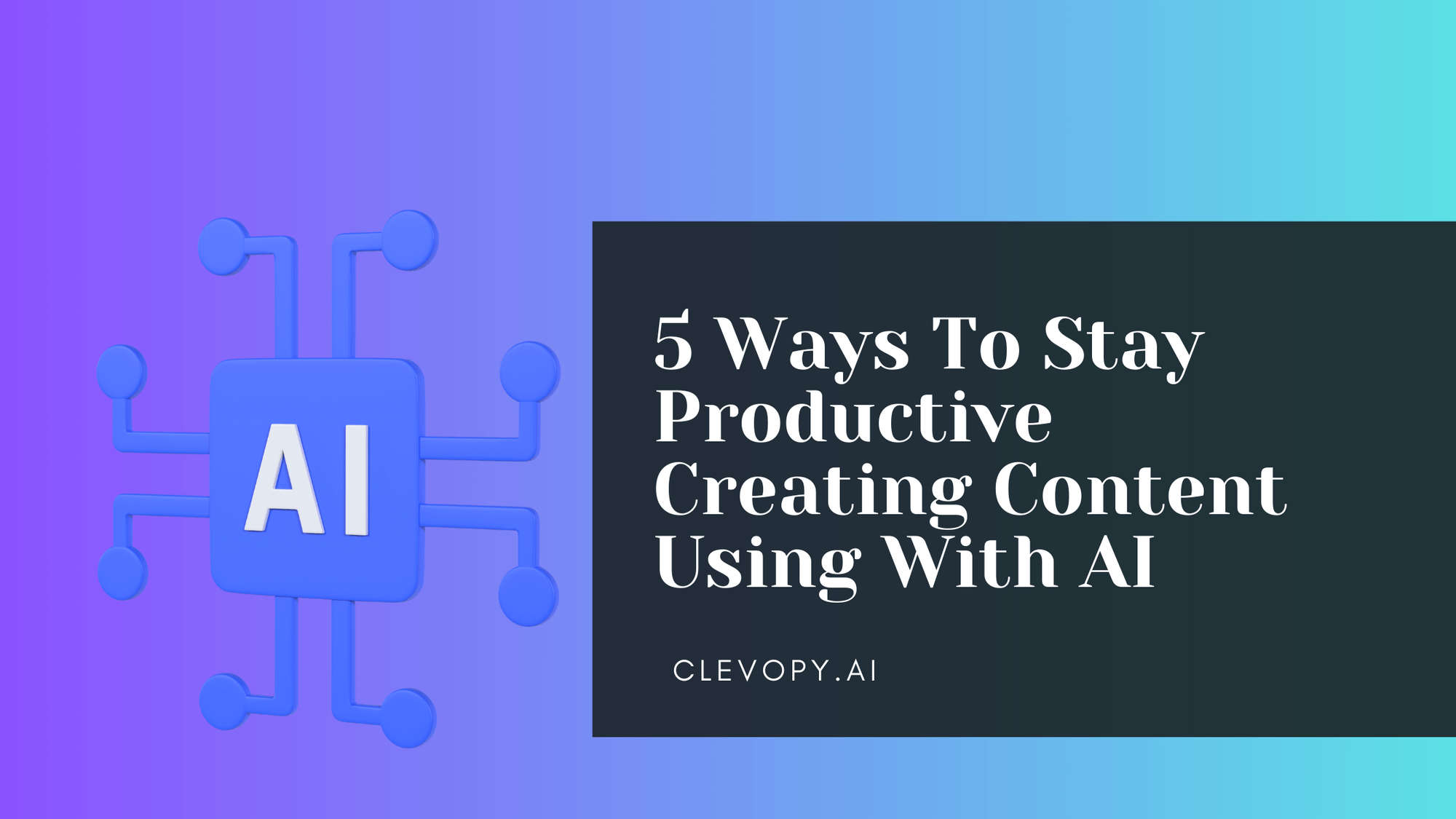Nowadays, Artificial Intelligence (AI) is becoming an integral part of our daily work lives. It is revolutionizing the way we do things and making us more productive with our content ideas and creation process.
AI-related content generation technologies are quickly becoming more advanced, and they are being used in every industry to automate processes and make workflow smoother and more efficient.
Content creation can be a daunting task for any marketer, especially with the prevalence of AI in marketing. Fortunately, with the right tools and strategies, you can become an effective content creator using AI to stay productive and develop engaging content that resonates with your target audience.
Here are five ways to stay productive while leveraging AI for content creation.
1. Automate Content Creation:
Automation is one of the most important tools available to marketers when it comes to boosting productivity.
By incorporating artificial intelligence into your workflow, you can automate simple tasks such as creating keyword-rich titles for blog posts or categorizing customer feedback as part of a sentiment analysis program.
This frees up time and resources for more complex tasks like creating personalized content plans based on customer behavior.
Using automated content creation involves identifying the desired output, setting the correct criteria, and selecting the right technology.
The first step in using automated content creation is to choose a topic or concept that will be used as the basis for the algorithm.
After this is done, various parameters need to be set such as keywords and phrases that should be included in the output, the length of the article or post, and other content types.
Once these parameters are set, then an appropriate technology such as natural language processing (NLP) or machine learning (ML) can be selected depending on the complexity of the task.
Once all these steps have been taken care of, an algorithm will then generate automated content according to instructions provided by the user.
This generated content can take many different forms including blog posts, articles, and social media updates among others.
It is important to note however that automated content generation cannot replace human creativity but instead work alongside it in order to produce optimized content faster.
2. Utilize Natural Language Processing (NLP):
NLP is an essential component of any AI-driven content creation strategy.
By leveraging NLP technology, marketers can analyze text-based data quickly and accurately extract key terms and concepts for use in crafting engaging content.
NLP has several practical applications across various industries.
For example, it can be used for search engine optimization by identifying keywords or phrases that are most relevant to the topic of a website.
In customer service call centers it can be used to analyze customer feedback in order to assess customer satisfaction as well as identify potential areas for improvement.
Additionally, it can be applied to medical records by recognizing medical terms and extracting relevant information from them.
3. Integrate Machine Learning:
Machine learning technology is another powerful tool marketers can use to create effective content faster.
Leveraging machine learning algorithms, you can optimize your marketing efforts by tracking user behavior patterns and deploying customized messages that best resonate with different target audiences.
When integrating machine learning into existing systems, the process usually revolves around three stages - training, testing, and deployment.
During the training stage, the algorithm is trained on large amounts of input data in order to generate reliable results and insights based on this input. In the testing stage, the algorithm is tested against different conditions and parameters to guarantee its accuracy and reliability.
Once these tests are completed successfully, then the system is ready for deployment.
The advantages of integrating machine learning into existing systems are numerous.
- It can help reduce costs associated with manual coding by reducing development time and labor as well as providing greater scalability for businesses who wish to expand their operations without having to re-write large chunks of code each time they do so.
- It can help organizations stay up-to-date with new trends in technology since they are constantly receiving updates from their machine learning models.
- Integrating machine learning into an application allows for more complex processes to be automated – such as decision-making or predictive analysis – while ensuring that accuracy levels remain high and that any errors made do not impact user experience.
4. Harness Text Summarization Tools:
Text summarization tools are ideal for busy marketers who need to craft concise yet impactful content quickly.
Utilizing these advanced applications can help save minutes or even hours off of production cycles, enabling them to focus on more strategic tasks instead.
Text summaries can be used for various purposes such as extracting essential information from long articles or documents, understanding complex topics quickly, and even creating content when time is limited.
By allowing users to quickly read through large chunks of text in a fraction of the time it would normally take them, these tools are becoming increasingly popular.
5. Leverage Voice Recognition Platforms:
Voice recognition platforms such as Amazon Alexa or Google Home are playing an increasingly important role in modern marketing campaigns.
With voice recognition technology, marketers can turn transcribed conversations from customers into actionable insights that inform the decision-making process all while saving time spent manually transcribing audio recordings.
Companies can also integrate voice recognition into their customer service solutions, making it easier for customers to access services quickly and conveniently.
Leveraging voice recognition platforms helps automate mundane tasks, freeing up resources to focus on more complicated projects.
In addition to direct customer service applications, businesses can utilize voice recognition platforms for marketing purposes.
A well-crafted conversation between a brand and a customer can help build relationships and loyalty with clients.
Voice recognition technology can also be used as an analytical tool in order to track customer behaviors and preferences over time, allowing marketers to continually improve their marketing efforts based on user feedback.
Leveraging voice recognition technologies offers several important security benefits. Since the system is able to record any user-inputted data such as passwords and other sensitive information, businesses are able to protect their systems from malicious attacks or attempts at fraud.
Using natural language processing algorithms enables the automatic detection of suspicious behavior before it becomes an issue - helping organizations stay secure.
Ultimately, staying productive requires a combination of clever tactics and innovative technologies such as AI-driven solutions if you want to consistently produce compelling content that resonates with your target audience at scale.
Utilizing these five strategies, you will have the necessary foundation needed to craft high-quality content with relative ease while remaining cost-effective as well as efficient in your workflow process.
Here is an infographic with five ways to use AI to stay productive:
5 Ways To Be More Productive With AI by Divine Tumenta
Great Deal on Lifetime AI Content Creation Tools! Don't wait until it's too late - Get your Offer Now




